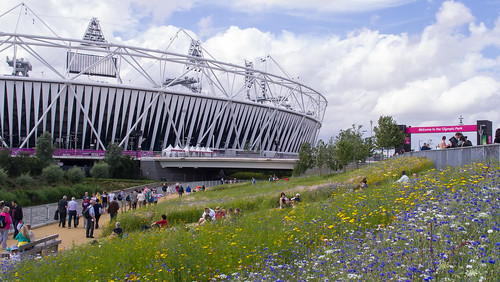An incredible urban park was built as home to the Olympic events with its impressive well-constructed venues and infrastructure in East London in 2011. The bid was won in 2005 and with the help of a highly talented and skilled architect, the completion of the Olympic Park was completed a whole year ahead of schedule.

Getting Started
The Olympic Delivery Authority built the main permanent venues and infrastructure on both the Olympic Park and the Olympic Village. Other venues built by the Olympic Delivery Authority include the Lee Valley White Water Centre and additional building work carried out on Eton Dorney and Weymouth and Portland.
Once the ODA (Olympic Delivery Authority) secured the Olympic Park site in 2007, they set about preparing for the ‘big build’ as it is known, constructing the infrastructure and main venues. They undertook the mammoth task of constructing the Olympic Park a year before the Olympic Opening ceremony.
The LOCOG (London 2012 Organising Committee) were in charge of adding the overlay, dressing and timing systems, these completely transformed the new facilities into fully-fledged venues all set for the games. While adding these finishing touches, the LOCOG also held test events to make sure everything was fit and in working order.
Additional Venues
The Olympic Park is not the only sporting venue that has been refurbished and/or built for the Olympic games. Hampden Park, Glasgow, the Millennium Stadium and Cardiff are amongst the venues that have been enhanced for the games that will offer long-term benefits for athletes and local communities. Landmark sites such as Greenwich Park and Horse Guards Parade have been redeveloped and adapted, with innovative layouts to suit the various events taking place there, bringing more attention to these areas.
The Lee Valley White Water Centre was completed in late 2010 and was already open to public use by early 2011. This meant that this Olympic venue was already benefiting the local community over a year before the games began.
After The Games
Now that the main Olympic Games are over, the buildings built for it will still serve a purpose. They’ll next play host to the Paralympic games, the major multi-sport event following on from the Olympics for those with physical disabilities.
After that, the buildings will go on to serve different purposes for the local communities in and near to where they were built. The improvements made to already existing buildings and local areas, plus the addition of these new buildings, will hopefully help encourage younger and older people alike to partake in sporting activities.
Leaving a Legacy
There’s no doubt that from the Olympics Opening Ceremony itself to the Olympic Village, one thing is for sure London Olympics 2012 will be remembered.
From the mass construction and staging that has taken place over the last 12 months from the creation of new jobs to the transformation of underdeveloped areas of London and the great sporting opportunities that have arose, London now flies the flag for all future Olympic events to come.
This article was written by Crispin Jones on behalf of The Drawing Room, architects in Leicester. To find out more about these architects in Leicester, follow this link to their site.
Photo: interbeat
